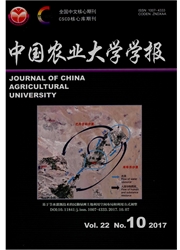

 中文摘要:
中文摘要:
为研究番茄miRNA在非生物逆境胁迫下的表达模式和功能分析。利用Real-time PCR检测番茄miRNA397在非生物逆境(干旱、盐害、ABA)条件下的表达量变化,发现Sly-miR397响应这些逆境胁迫,尤其在干旱胁迫下表达最明显。故将Sly-miR397过表达载体转入拟南芥中,进行转基因功能验证。结果表明:与野生型相比,转基因拟南芥植株叶片相对含水量下降速率更缓慢,保水能力更好,且在干旱胁迫下,转基因植株的长势明显优于野生型,其最大光合效率、3种抗氧化酶活性SOD、POD、CAT均明显高于野生型,同时胁迫所产生的丙二醛含量明显低于野生型拟南芥。表明Sly-miR397能提高拟南芥对干旱胁迫的耐受性,在植物抗旱过程中起着重要作用。
 英文摘要:
英文摘要:
To study the expression patterns and function analysis of miRNA under abiotic stress, Sly-miR397 expression patterns in abiotic stress including drought, salt, and ABA treatments were detected by real-time PCR. The result showed that Sly-miR397 responded the abiotic stress, especially in drought stress. An over-expressing Sly-miR397 plasmid vector was then constructed and introduced into Arabidopsis thaliana successfully. Compared with wild type plants, relative water content rate of transgenic lines declined more slowly and they had better water retention. Under drought stress, the transgenic lines grew better than the wild type. Moreover, Fv/Fm and antioxidase activity of transgenic lines were significantly higher than those in the wild type,while malondialdehyde content was declined in the transgenic lines. Overexpression of Sly-miR397 significantly improved the drought tolerance of Arabidopsis thaliana indicating its important role in plant drought resistance.
 同期刊论文项目
同期刊论文项目
 同项目期刊论文
同项目期刊论文
 期刊信息
期刊信息
